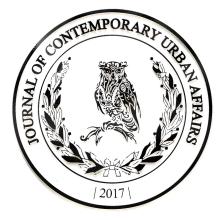Resource information
Landsea interactions extending inland and towards the marine spaces are affected by major management and design transformations Globalization processes port expansion projects and extensive energy transition requests have recently led port institutions to demand more land engaging deeply with logistics platforms and radically restructuring forms of port governance In this competitive context the phenomenon of Port Clusterisation ie the administrative aggregation whereby two or more ports are merged to form port clusters is heavily impacting the institutional sphere However not only does this phenomenon have no control over cities but its spatial component seems to be neglected by the disciplines of space such as urbanism and architecture As a result port and city institutions lack design tools to tackle urgent challenges as coastal utilization the need for resilient portcity infrastructures and the regeneration of the portcity architectural heritage In terms of novelty and contribution to academia an examination of the spatial footprint of port clusters will allow research to move beyond its stateoftheart by targeting a phenomenon that though pivotal is underresearched especially within the spatial disciplines


